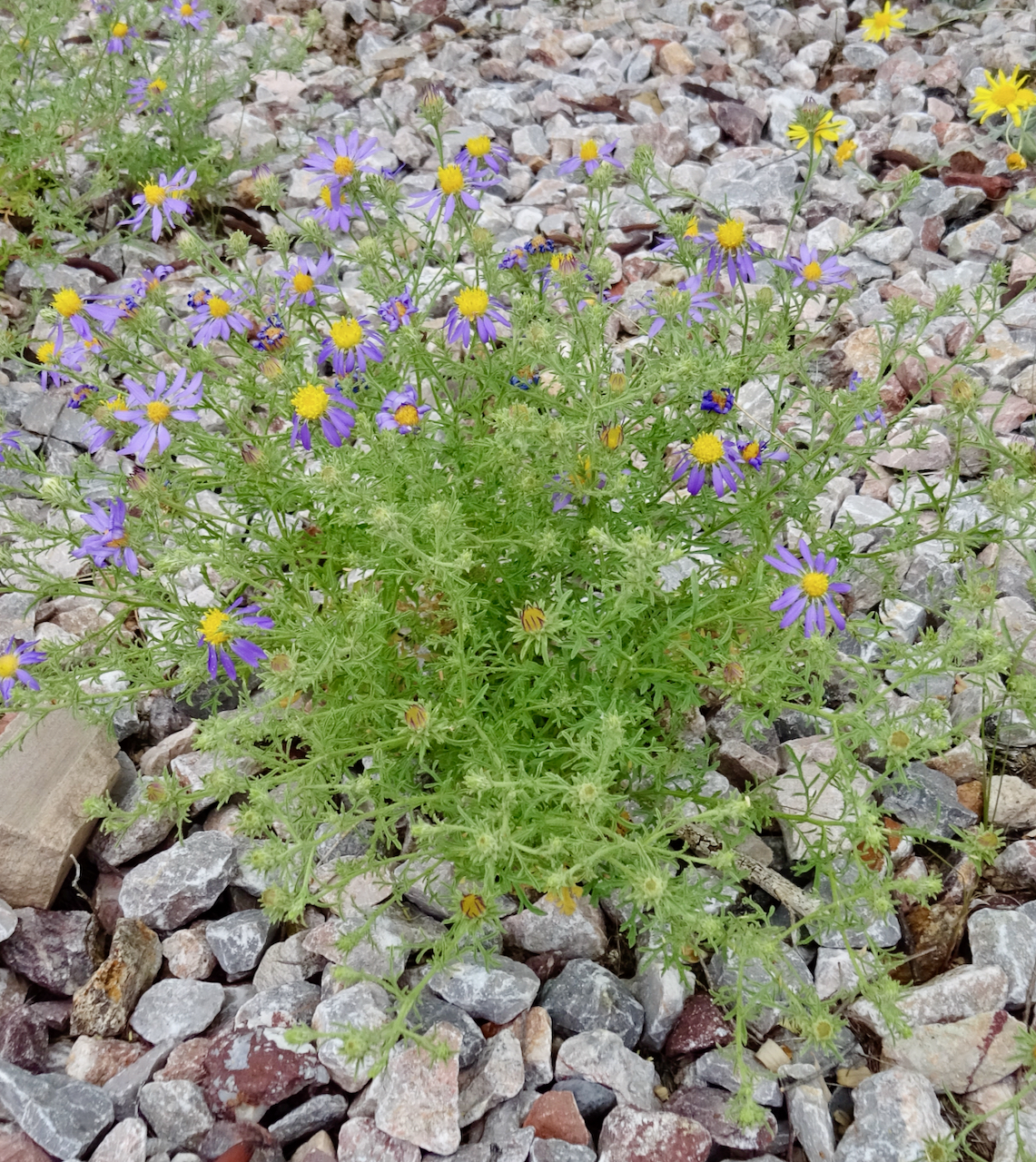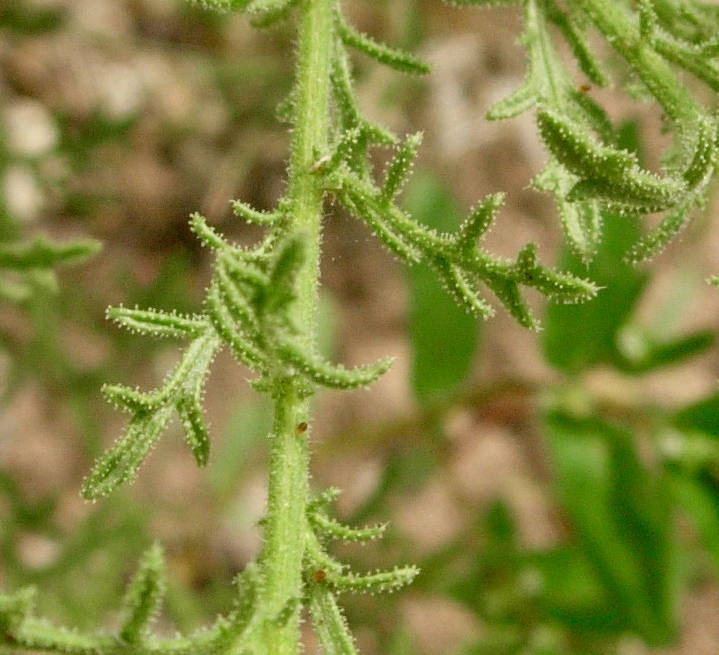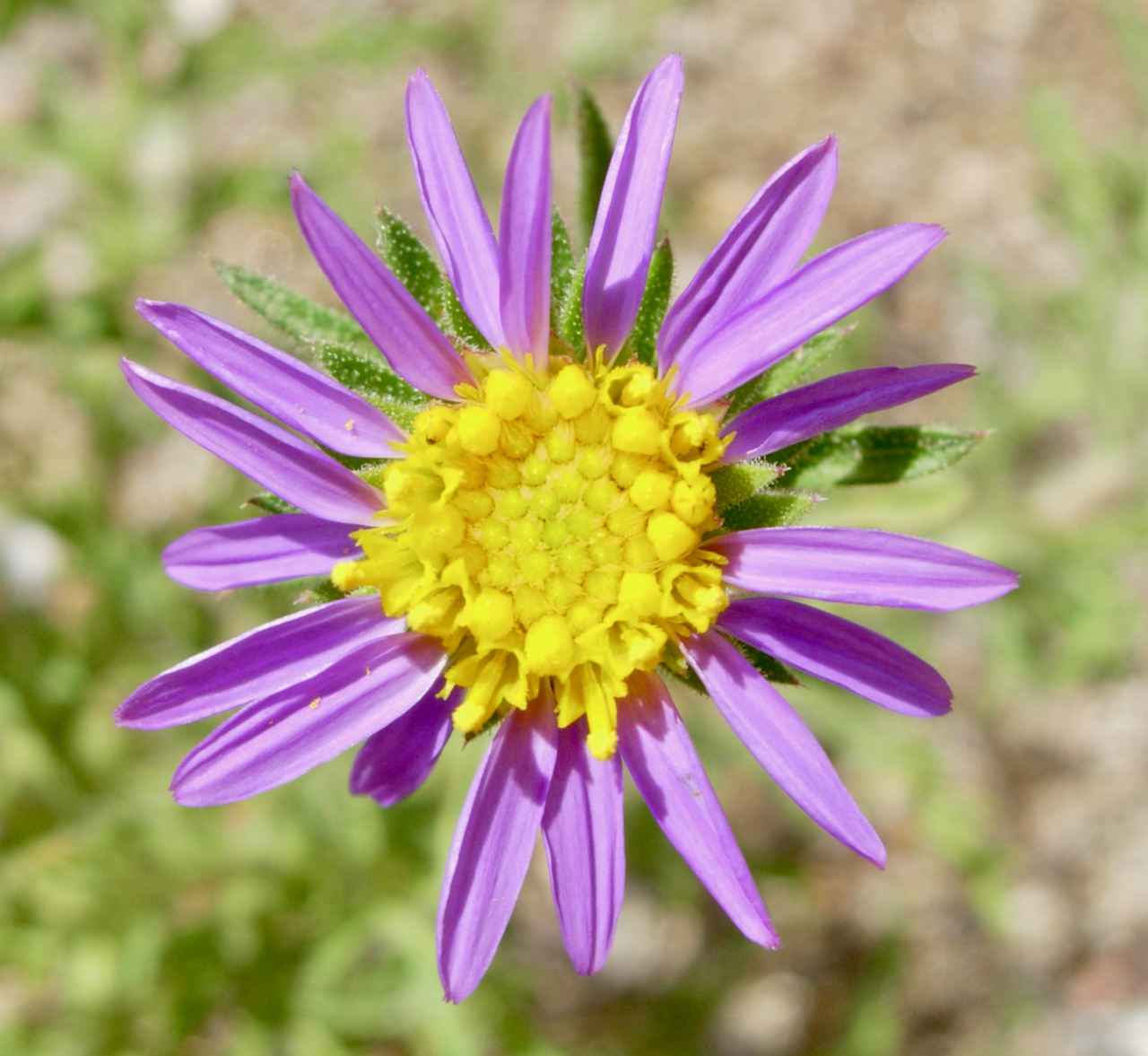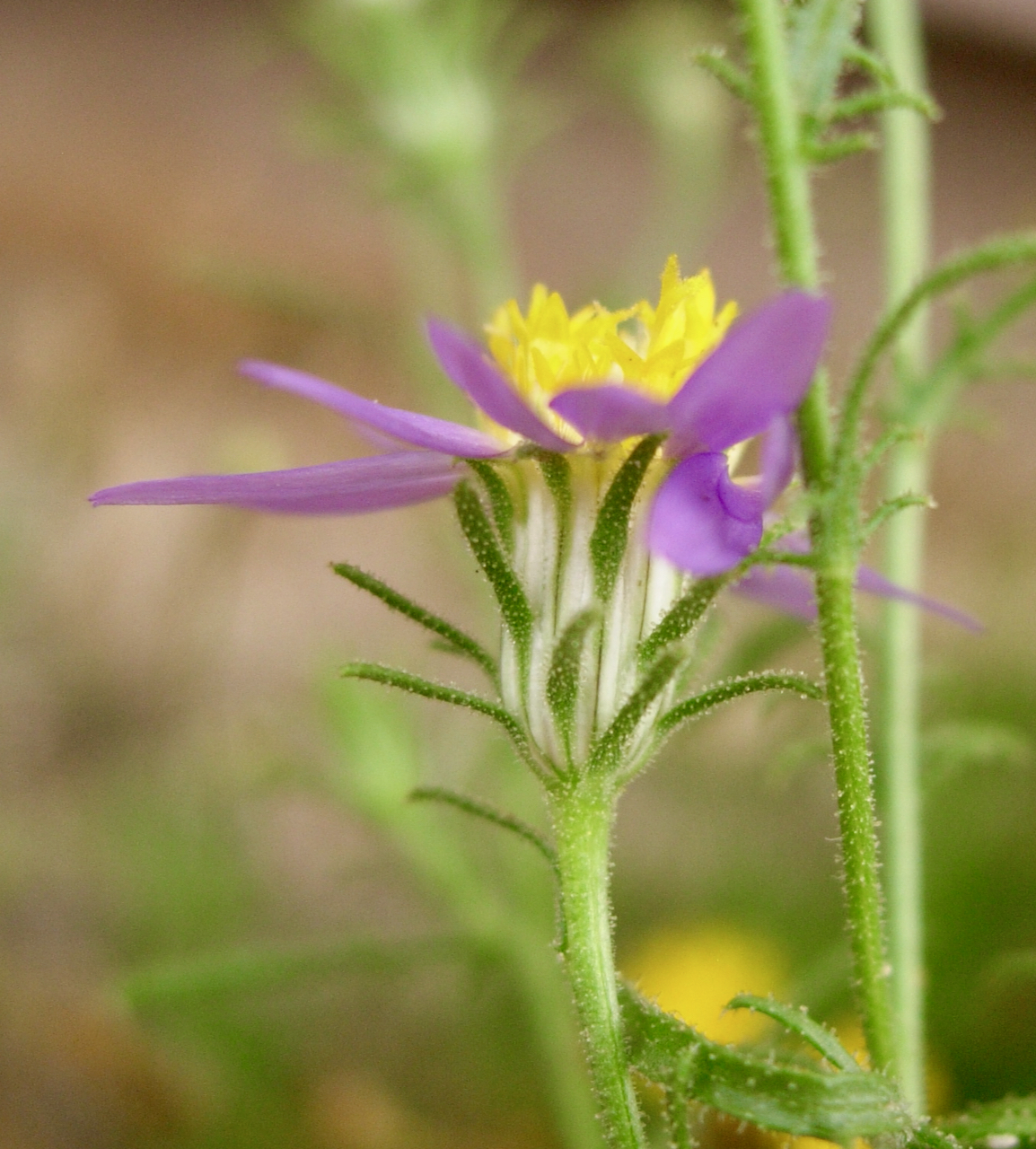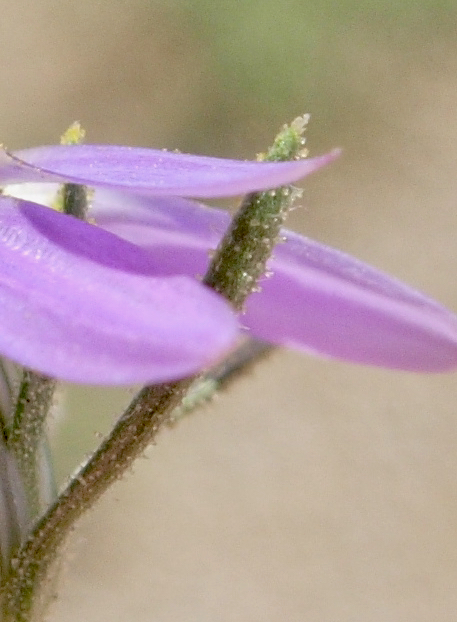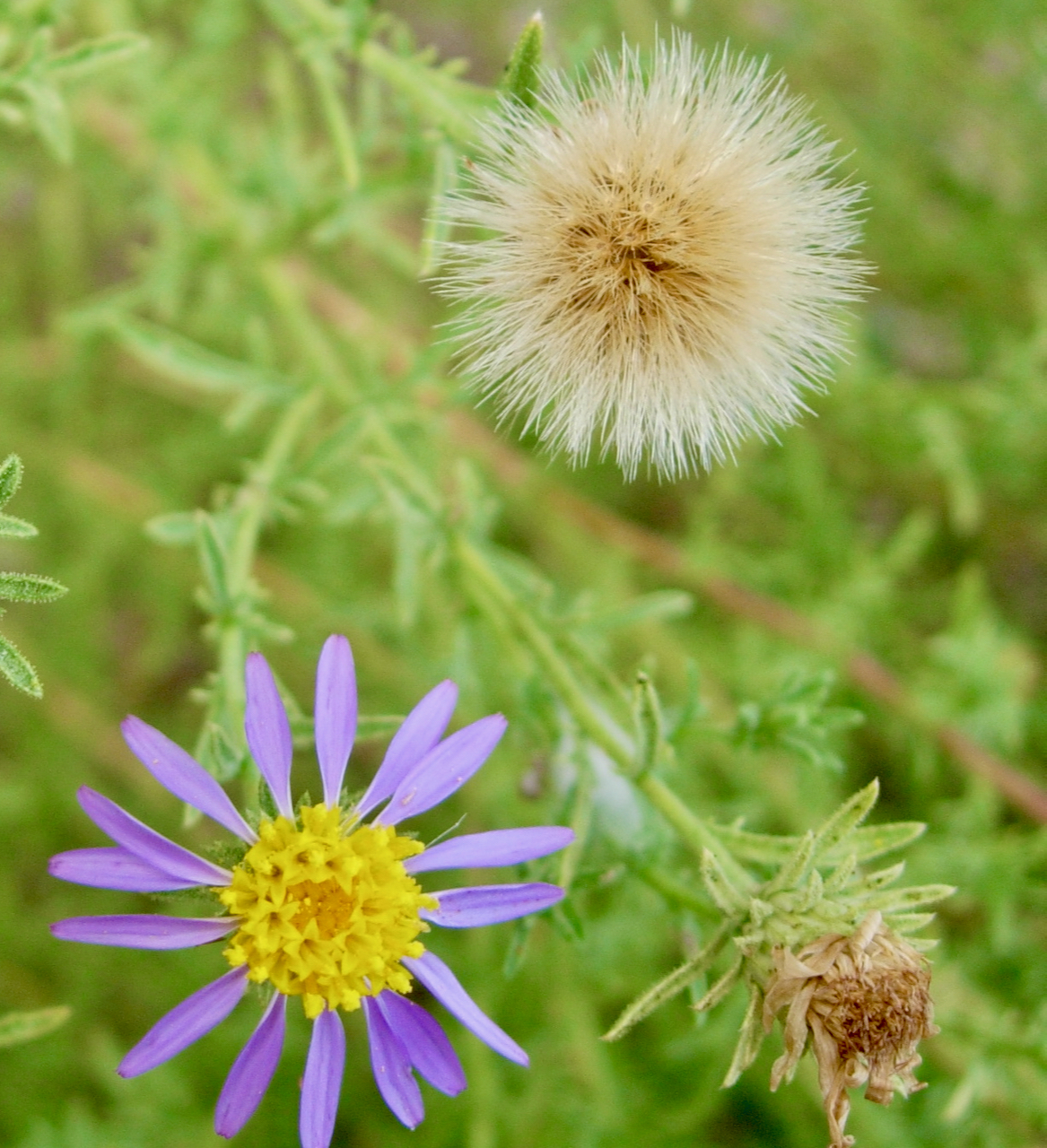Mesa Tansyaster
Machaeranthera tagetina
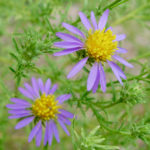
About the Plant
Mesa tansyaster is a summer-blooming annual that spreads readily but is always welcome. Though small in stature, it produces abundant purple and yellow daisies. Mesa tansyaster is native to Arizona, southern New Mexico, and Mexico. It resembles spiny goldenweed, which was once placed in the genus Machaeranthera.
Mesa tansyaster begins to grow in spring and may bloom a bit if rains are ample. However, most flowers appear in August and September. Don't be surprised if the lower leaves start to brown as flowering begins. Expect mesa tansyaster to appear most abundantly near irrigated plants. It is an annual and can happily coexist with other plants during its short lifespan. When the plants die in late fall, clean up by cutting or breaking the plant at its base. Make sure to shake well to scatter any remaining seeds for a show next summer.
Notes: Machaeranthera tanacetifolia (tansyleaf tansyaster, Tahoka daisy) is a closely related species also found in Arizona and more broadly throughout the desert Southwest and the western Great Plains. It has more petals and disc flowers and a larger flower head than mesa tansyaster (2 inches compared 1 inch). The two species may hybridize where their range overlaps, so an absolute ID may be difficult.
Wildlife value: attracts insects, especially small butterflies and bees
More Information
Weekly Plant on mesa tansyaster
Technical botanical description from SEINet
